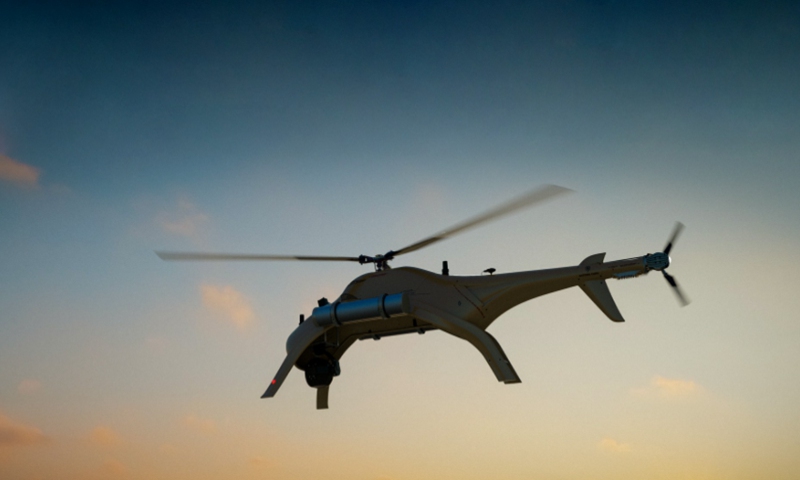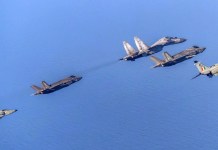Contrary to reports about the India-China “disengagement” plan, there have been “reinforcements of People’s Liberation Army (PLA) posts, relocation of troops, and rapid strengthening of road infrastructure across the friction points in occupied Aksai Chin over the past 30 days”, Hindustan Times reported.
7000-Tonne, Most Lethal Chinese Submarine Type-093A Heightens Tension As It Goes Hunting In The Sea
As earlier reported by the EurAsian Times quoting Chinese state media – the Global Times had rejected the disengagement plans and called the Indian reports ‘baseless’.
Some Indian media outlets are good at projecting India’s mighty stance through partly true and partially misleading information, with the aim of stirring up domestic nationalism. The GT learned that whether the disengagement of troops starts from southern or northern of Pangong Tso Lake, how to withdraw and how many troops were key topics during the previous rounds of talks.
India has always had “unrealistic” ideas about the Line of Actual Control (LAC) and disregarded history, unilaterally believing that Fingers 4 to 8 are its patrolling areas, and has sought to gain bargaining chips in talks by fishing for interests in the disputed border area.
Senior military commanders told the Indian daily that “the PLA is constructing more than 10 dugouts each at Samar Lungpa, 30km east of Karakoram Pass; and at Mount Sajum, south of Rechin La. It is also increasing troop deployment at Qizil Jilga, 70km east of Daulet Beg Oldi (DBO).”
China has reiterated its stance of seeking disengagement and peace in the border region. However, its state-owned Global Times has reported that PLA Tibet Military Command troops at the border with India have been equipped with cutting-edge unmanned helicopters.

According to a China Central Television (CCTV) report, cited by GT, the same command has “ordered smart weapons and customized equipment — from portable oxygen generators to a multi-purpose dining car — from 22 domestic manufactures”.
Blowfish A2 and Ranger P2-X, part of the Ziyan UAV Universal Unmanned Helicopter series, are capable of performing strategic support, material transport, logistics support, and plateau intelligence reconnaissance and tactical strike missions, Global Times quoted Zhuhai Ziyan UAV Company as saying.
The Hindustan Times report said, movement of over 60 heavy-equipment transport vehicles has been noticed on the road from Shandong to Spanggur Gap, just south of Chushul, and surveillance equipment is being installed by the Chinese all along the line of actual control or LAC in Ladakh.
At Gobak, 60km east of LAC, Chinese tank transporters have also been noticed, and there has been redeployment of troops in Aksai Chin at Rudog, Mapotheng, Sumxi, and west of Chang La, north-east of Demchok, the HT report claimed.
Depsang Bulge has been a friction point between the two armies since the 2013 transgressions by PLA, the report said, adding the Chinese army is undertaking strategic road construction for faster deployment on LAC. It flagged another road construction near Chuti Chang La, across the Depsang Bulge, barely 8km from LAC.
Satellite images reveal a new road in Spanggur Tso, further away from Indian positions, which is being constructed presumably to mitigate any threat or reconnaissance of logistics and troop movements towards the Spanggur Gap and other connected areas.
Post #IndianArmy high altitude maneuvers in August, #China began working on a new road in #SpanggurTso further away from indian positions to mitigate any threat or reconnaissance of logistics & troop movements towards the #SpanggurGap & other connected areas #IndiaChinaFaceOff pic.twitter.com/S7VhA48xkC
— d-atis☠️ (@detresfa_) November 10, 2020
Military expert, Major Manik Jolly (Retd), posted a series of tweets saying that the development on the Chinese side provides them with multiple axes, control of the area, speed of movement, and fast reinforcement capabilities.
will marry-up with the existing Chinese road along Spangpur Tso at point 1 and create a loop / circle along the entire lake. This gives Chinese
1. Multiple axis
2. control of area
3. speed of movement
4. All round def capability
5. Fast reinforcement capabilities pic.twitter.com/EpHtVKvuz6— Maj Manik M Jolly,SM (@Manik_M_Jolly) November 10, 2020
Infrastructure development in the regions along the LAC has been a bone of contention between India and China. The Doklam stand-off also had similar reasons behind it while the current tension in Ladakh is the result of India inaugurating a link road through Uttarakhand’s Lipulekh Pass, connecting India to China.
While China has undertaken massive development in Tibet and other regions along the LAC, it had strongly objected to India’s action of constructing an 80-km road from Ghatiabgarh to Lipulekh, the pass near the tri-junction of India-China-Nepal and also the lowest point in this Himalayan range.
Another set of satellite images posted by open-source intelligence Detresfa’s Twitter handle shows that the construction in the strategic Sichuan-Tibet railway project has begun. The project is of great military significance with respect to India.
A major part of #China's Sichuan-Tibet railway project has begun construction, comments by #XiJinping stressed on its significance for many social/economic benefits apart from underlining its military role with respect to #India & how it boosts chinese regional control in #Tibet pic.twitter.com/ohznRG8X0C
— d-atis☠️ (@detresfa_) November 9, 2020
The eighth round of Corps Commander-level talks between India and China took place at Chushul on 6 November. The next meeting is likely to be held soon. India’s External Affairs Ministry described the last of talks as “candid, in-depth and constructive” where “both sides exchanged views on disengagement at all friction points along the Line of Actual Control in the Western Sector of India-China border areas”.
Earlier, The Indian Army has rejected as “baseless and fake” a report in the British daily newspaper ‘The Times’, which had quoted a Chinese professor to claim that the Chinese army had used “microwave weapons” to drive Indian soldiers away from their positions in eastern Ladakh.
An expert talking to the EurAsian Times, who did not wish to be named said – it appears that China wants My Way or Highway. Either India must accept all demands of China (which is unlikely) or it will be a clash of better equipped PLA soldiers vs ill-equipped Indian soldiers. India wants quick disengagement from Ladakh and China realizes that and will try to press New Delhi to make compromises.




